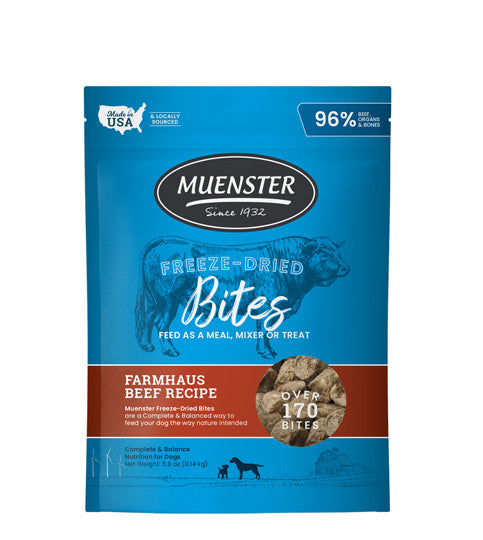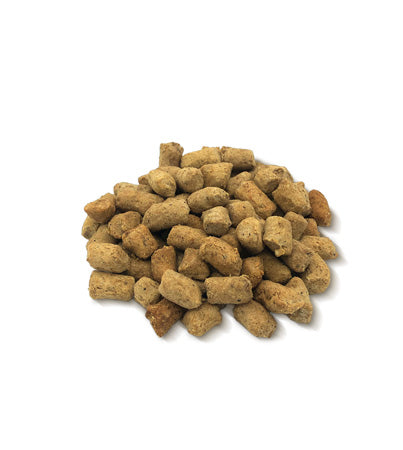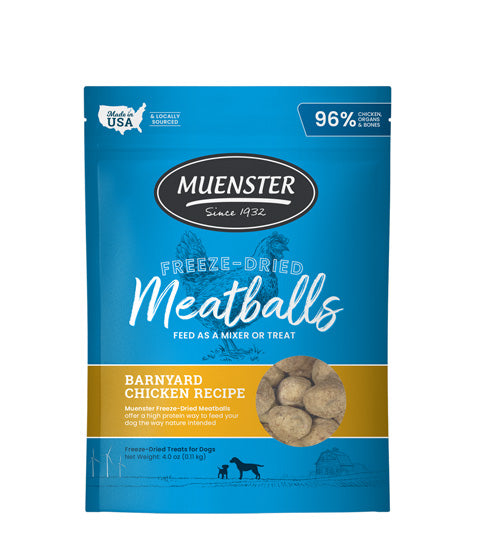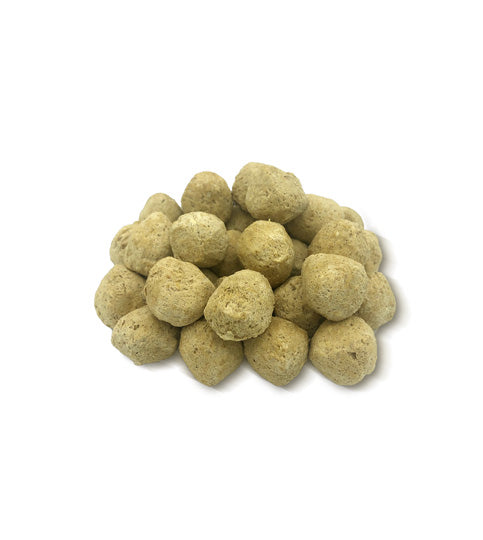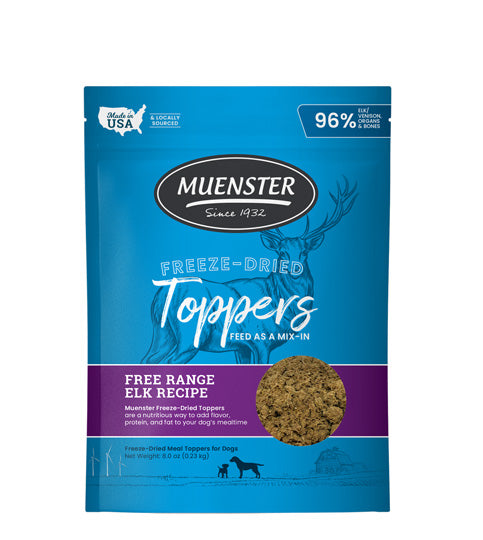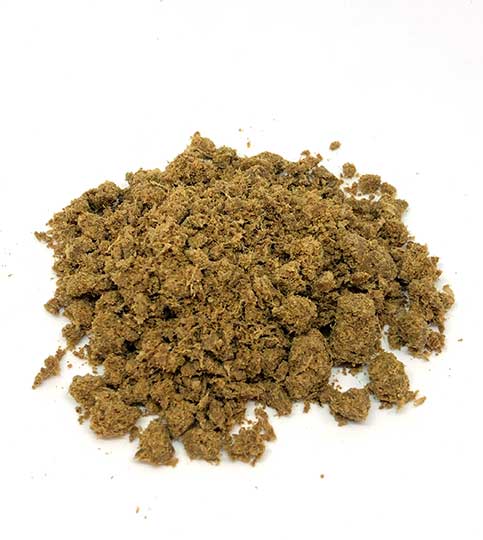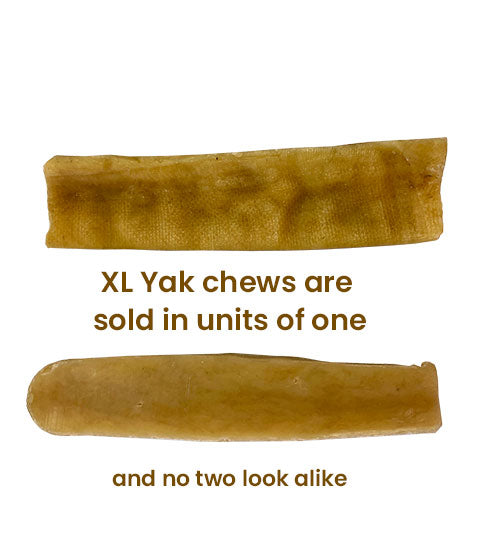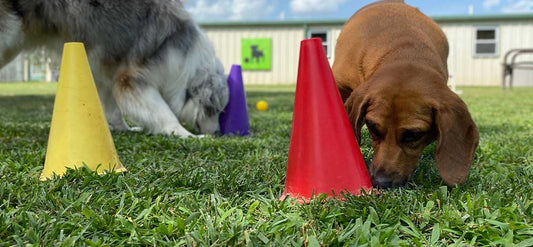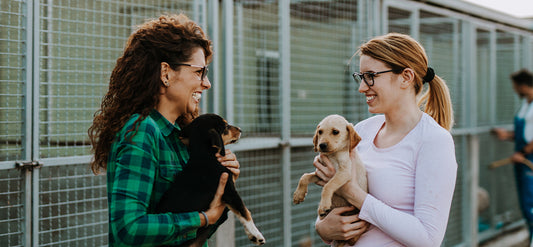Imagine a world devoid of variety - repeating the same activities, with the same toys, day in, day out. Monotony can be as damaging for our pets as it is for us. Enrichment isn’t solely about entertainment, but allowing dogs to exercise their natural instincts and enjoy a fulfilling, vibrant life. Hence, it’s less of a luxury and more of a necessity because a mentally engaged dog is undeniably a happy dog.
Canine Enrichment Examples
Canine enrichment is vital for a dog’s mental and physical development and is divided into Sensory and Interactive Enrichment. Sensory Enrichment harnesses your dog’s five senses through activities like nosework games, bubble interactions, or simply watching the world go by. On the other side, Interactive Enrichment involves engaging activities like agility courses, problem-solving games, or DIY dig areas that satisfy natural instincts. Balancing these two enrichment types helps prevent canine boredom, contributing to a happy and well-rounded pet.
Exploring Easy and Effective Dog Enrichment Ideas
Enrichment activities don’t need to be complicated or expensive – they’re often low-maintenance and affordable. These can range from DIY ideas and unique toys to non-food activities. The aim is to provide a change of pace and challenge your pup mentally and physically.
A game of tug, for example, not only physically tires your dog but also helps them understand control through “tug” and “release” commands. Using dog puzzles that hide treats help boost their problem-solving skills. Regular walks in new surroundings expose them to new smells, sights, and sounds.
Remember, enrichment is more than just toys and treats; it’s about engaging all five senses while focusing on your pet’s physical and psychological health.
Combining Nourishment with Enrichment: The Importance of High-Calibre Snacks
Treats play a significant role in canine enrichment. They go beyond satisfying your dog's taste buds and can be powerful tools for engaging play, reinforcing positive behavior, and even training. Remember to factor in your dog’s daily calorie intake to avoid weight gain. A good strategy is to subtract the calories from treats used in enrichment activities from your dog's regular meals.
When choosing rewards, prioritize high-quality treats free from artificial preservatives and fillers. Look for healthy ingredients that support your dog’s overall well-being.
Frequently Asked Questions
Use this section to address common queries related to canine enrichment. A well-informed pet parent is the first step towards a healthier, happier pet.
Can dog enrichment help with my dog’s behavior issues?
Enrichment can be a vital tool for managing behavioral issues in dogs. Failing to meet their sensory needs or boredom can result in disruptive behaviors like excessive barking, chewing, or aggression.
By introducing activities that satisfy their innate instincts such as hunting or scent tracking, you can prevent these problems. For example, dogs engaged in “hunting” through play are less likely to destroy furniture!
Moreover, just like humans, dogs can suffer from anxiety and depression. Cognitive enrichment activities like puzzle toys or K9 nosework can improve their mental health, akin to a human's satisfaction in solving a puzzle or gardening.
Adding enrichment to your dog’s routine can make them happier and better behaved. But remember, each dog is unique and what works for one may not for another.
How often should I implement enrichment activities for my dog?
Enrichment should form a significant part of your dog’s daily routine. Try to dedicate around 30-60 minutes per day to diverse activities that focus on mental stimulation, which can lead to some wonderful long-term enrichment benefits. Think about integrating these activities smoothly into your current pet care regimen. This could involve alternating your usual walking routes, rewarding your pup during playtime, or using puzzle feeders at meal times. Remember that variety is essential in keeping both yourself and your dog engaged and entertained.

Are there any specific breeds that benefit more from dog enrichment?
No, every dog breed can reap enrichment benefits. Just as we as humans have our individual likes and dislikes, so do our canine friends. They may react differently to various activities based on their breed-specific instincts and characteristics. However, the concept of enrichment goes beyond breed—it provides ways for your dog to fulfill their innate needs and behaviors while also stimulating their minds and bodies.
Taking the breed into account can help us tailor enrichment activities. For instance, Retrievers may enjoy fetch games or water-based activities that encourage their natural retrieving instincts. Equally, Terriers, originally bred for hunting and burrowing, may love digging activities or interactive toys that simulate burrowing for prey. Herding breeds like the Shepherd might find puzzle toys engaging, as they cater to their propensity for problem-solving.
Can dog enrichment activities help with my dog’s anxiety or stress?
Dog enrichment activities significantly reduce stress and anxiety in our canine friends. Much like us, dogs feel edgy when routines are disrupted or when they lack an energy outlet. Enrichment activities offer them suitable, satisfying, and natural outlets. Sensory tasks such as nosework can calm and help redirect any pent-up energy, promoting bonding and enhancing their happiness.
The essence of enrichment is diversity, with activities catering to your dog's breed, personality, and preferences. For instance, a herding dog may relish agility tasks, while a scent-tracking one might find nosework more fulfilling.
Mental stimulation, an essential enrichment component, keeps our furry companions from boredom and subsequently, stress and anxiety. An active and engaged mind contributes significantly towards their welfare.
Can dog enrichment activities help with my dog’s physical fitness?
Enrichment activities are not just for your dog’s mental wellness, but also, they offer considerable physical benefits. Through a mixture of games, DIY agility courses, and even chase-the-bubble sessions, your furry friend engages in beneficial exercise that strengthens muscles, improves balance, and enhances endurance—all while having fun.
Whether it’s running through a DIY agility course or exploring a dedicated digging pit, your dog gets a workout that's engaging and enjoyable. The beauty of enrichment tasks lies in their adaptability, allowing an effective approach to maintaining the health of your dog throughout their aging process.
As with any form of exercise, remember to start slow, gradually increasing intensity while providing ample fresh water during activities. If in doubt, a visit to your trusted veterinarian can provide guidance on the best way to incorporate enrichment into your dog's daily routine.

How can I get more ideas for enrichment?
- Follow our social channels on Facebook and Instagram. We post videos and articles about enrichment.
- Facebook Groups on Canine Enrichment.
- Ask your network. The people you know and love have dogs too and may have ideas to share.


